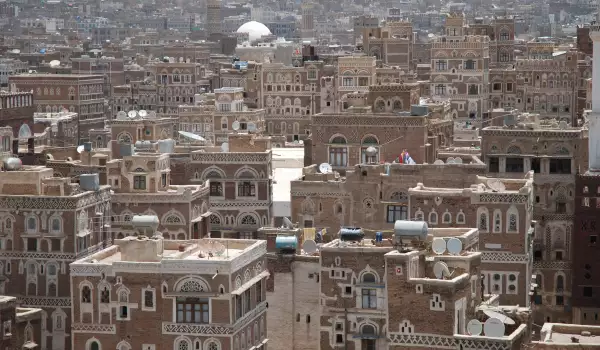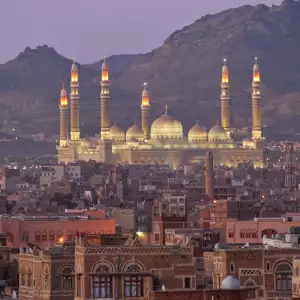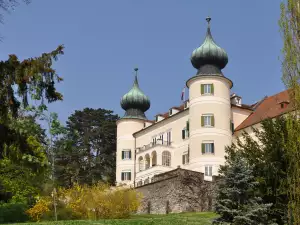Sanaa

Sana'a is the capital of Yemen. This is one of the oldest continuously inhabited cities in the world and one of the highest capitals located on Earth. Sanaa is the successor of the Arab culture. The modern city is trying to live in harmony with the Old City of Sanaa, which is included in the UNESCO list of World Heritage Sites in 1986.
Sana'a is located in the eastern part of Central Yemen. Today in the capital live a little less than two million people who are descendants of the millennial history of the city. For the first time, preserved historical texts mention Sanaa in the 1st century, but they probably had a village here in BC.
Documentation of the 10th century chronicler of Muhammad al-Hasan al-Hamadan said that Sanaa was founded by Sha'r Autar, king of the Sava, who lived and ruled in the late 2nd century. He raised the famous palace Gumdan.
Along with the establishment of the Yemen capital, came legends. The most famous of them said that Sanaa was founded by Shem, the son of the biblical Noah. Again according to legend, the city's old name Azalia derived from Uzal, which is the name of the son of Shem.
In 520 Sanaa became the capital of the State of the Himyariti and in the 6th century the territory hosted an her epic battle between the armies of Persia and Abyssinia. In 628 people of Yemen accepted Islam. It is said that Prophet Mohammed was a personal witness and supporter of the building of the first mosque in Sanaa.
Later in the middle Ages around 12th century, Sanaa is ruled by the dynasty of Ayyubidi. In the religious text of hadith, from the Prophet Mohammed from the 12th century, Sanaa is mentioned as one of "four cities of Hell".

In the late 19th century, Sanaa city was fortified with a castle, watchtowers, 50 mosques, inns, public baths, gardens, vineyards, etc. The capital of Yemen had sewer and water, from Mount Nokum. Sanaa flourished as a result of trade and in particular that of coffee. Since 1990, after the unification of Yemen, Sanaa became the official capital of the country.
During the 15-year domination of Abyssinia in Sanaa was built the great cathedral congregation in support of the Byzantine King Justinian I, which became famous as the largest in the southern Mediterranean.
Among the biggest attractions of Sana'a are many mosques, including the Al-Saleh. This grand and impressive temple is located in the modern city center and is the cultural symbol of Sanaa. It was completed in 2008 and the amount required for erecting the beautiful building with six minarets and five domes amounts to $60 000 000.
Priceless historical heritage of Sana'a remains in the Old City which is under the auspices of UNESCO. Local knowledge of stories say that it is the oldest inhabited city on earth. In the old part of Sanaa may be found old media that retains the charm and the broadcasting of past times. Everywhere is beautifully ornamented and decorated adobe houses that are more than 400 years old. Their decoration is impressive - a generous facade with tinted windows, blue shutters and doors.
Old City of Sanaa is the place where you can visit traditional Arab markets or called twists. There are over 40 in number. Suq al-Milh, also known as the salt market is particularly attractive. One can find a market for roasted grasshoppers, spices, vegetables and fruits, to fine jewelry, carpets, cotton, pottery and antiques.
In the Old City of Sanaa are valuable historical monuments such as the mosque, also known as Samsarh. This temple dates back 1400 years and is currently making great efforts to be preserved. There are about 100 mosques in the old part of the Yemen capital. The number of houses that are monuments account to around 6500, traditional Arab baths are 12 in number. The majestic Old Mosque (Jami 'al-Kabir/Great Mosque) dates from the 7th century and is one of the oldest in the Islamic world.






